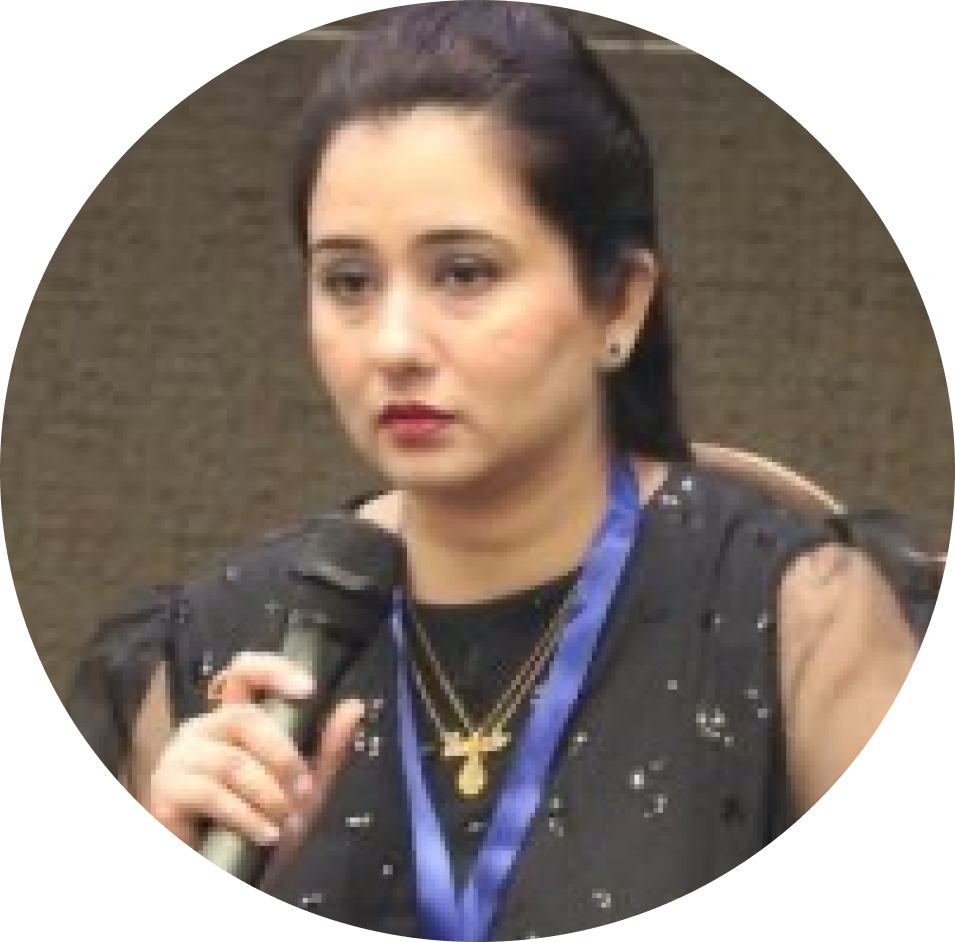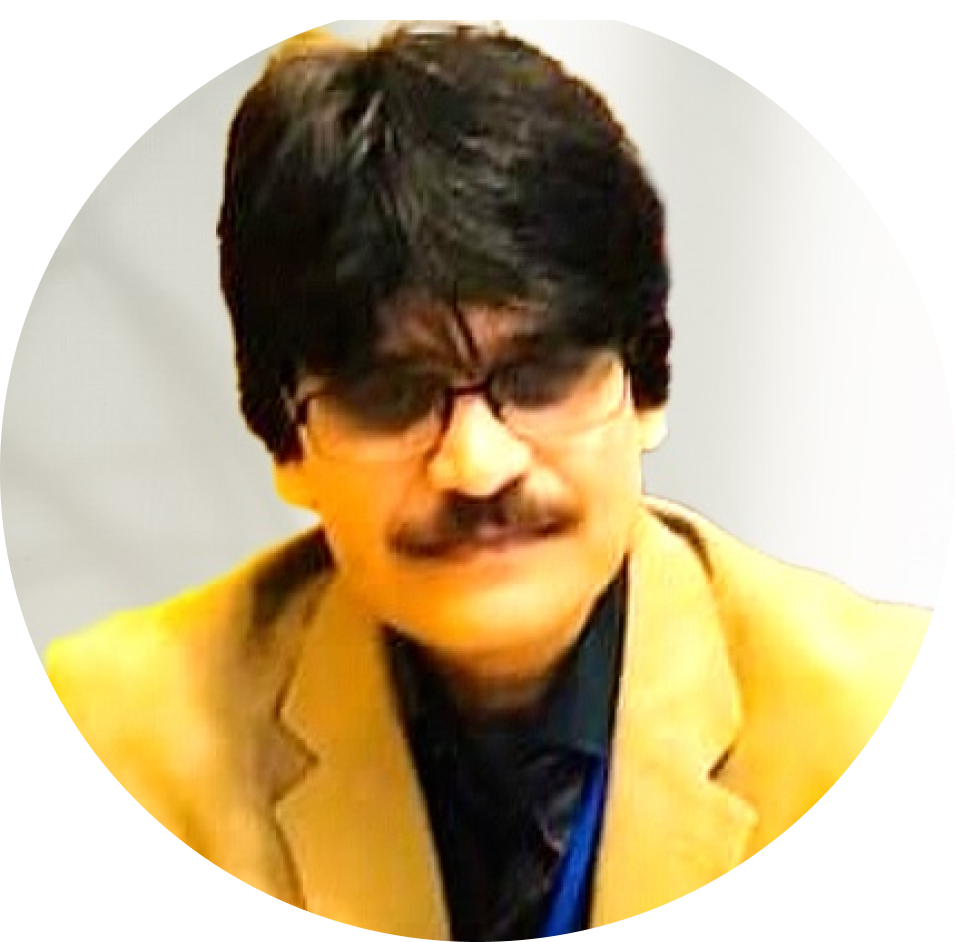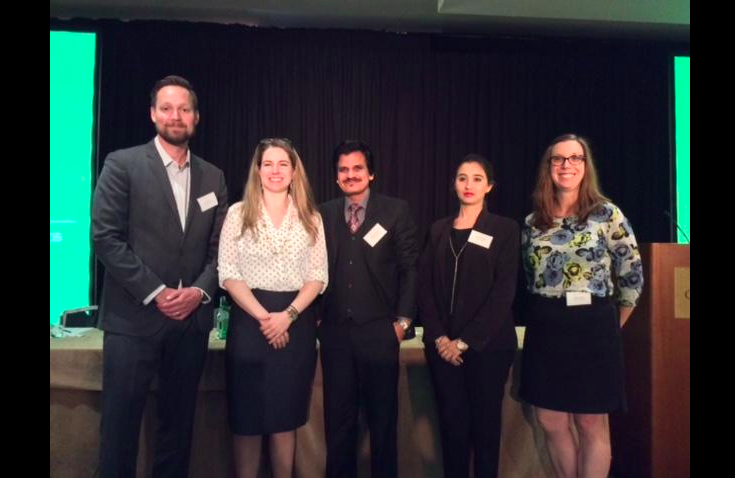DOAJ has Ambassadors from several countries all over the world to increase awareness of DOAJ and open access and to teach their local communities about good practice in publishing. We checked in with Dr. Muhammad Imtiaz Subhani and Amber Osman, DOAJ Ambassadors in Pakistan to get an overview of open access in Pakistan and some of the projects they have been working on.
When did you become Ambassadors for DOAJ?

Amber: We joined the Ambassador program simultaneously in March 2022. Prior to that, we were already interacting with DOAJ and actively integrating it into the criteria used by the Higher Education Committee of Pakistan to accredit journals as open access. Our ongoing communication with DOAJ eventually led to our recruitment as Ambassadors.
Dr. Subhani: Our involvement dates back to 2019, when we worked closely with the Higher Education Committee of Pakistan to establish the HEC journal recognition system. During my appointment as Committee member of HEC journal recognition system (HJRS), We conducted various analyses on DOAJ, including a comprehensive review of the removed list of journals in July 2020. This work helped gain government acceptance of DOAJ. Currently, the HEC Journal Recognition System relies on Web of Science, Scopus, and DOAJ for journal inclusion, signifying government recognition. We were later invited by the Higher Education Commission of Pakistan to train journal editors across various regions on initiatives related to Web of Science, Scopus, and DOAJ.

In what way is the HEC Journal Recognition System significant for scholars and editors in Pakistan?
Dr. Subhani: The Higher Education Commission (HEC) Journal Recognition System (HJRS) is crucial for scholars and editors in Pakistan as it ensures quality assurance by providing a vetted list of reputable journals, thereby maintaining academic research standards. For scholars, it offers academic recognition, enhances the visibility and impact of their research, and is often a requirement for career advancement and securing research grants. For editors, HJRS inclusion boosts journal credibility, increases submission rates, enforces high editorial standards, provides access to resources and support from HEC, and facilitates networking and collaboration within the academic community.
Amber: Professors, faculty, students, researchers, and scholars must adhere to the list as universities use it for hiring and promotion guidelines.
What are your backgrounds?

Dr. Subhani: I hold a PhD in Quantum Finance/Financial Econometrics and completed postdoctoral research in open science at the Federal University of Goiás, Brazil, driven by my passion for open science. Since 2011, we have been advocating for open access. In 2015, we received recognition as editors through the Web of Science ScholarOne Vision Award for our commitment to transparency and best practices and we were invited to the Web of Science Scholarone conference to talk as the winners.
Amber: The award spurred our involvement in various open science projects globally. We were selected for several funded projects, contributing significantly to both international and regional open-access initiatives. Continuous training is essential in this field due to constant technological and AI developments.
What motivated you to pave the way for others?
Amber: After completing my Master’s, I worked in the research and development department of my university, where publishing is crucial for success. As part of a research group with Dr. Subhani, we authored several papers together, driven by our passion for exploration and learning. Our work garnered attention from colleagues in other institutions, who sought our help. While competition exists, we were often leading the way.
Dr. Subhani: Our journey continues as we contribute to numerous organisations like DOAJ, Crossref, NASA (Transform to Open Science), UNESCO, Creative Commons and HEC Journals Recognition System, HJRS. Our work with these organisations demonstrates our commitment to open science and research communication. We are always seeking new opportunities to promote open science.
What is happening in Pakistan at the moment concerning open access?
Dr. Subhani: Universities and research institutions in Pakistan have largely adopted open access policies, though the preferred models vary. Some opt for Article Processing Charges (APCs), while others choose different models. There is widespread awareness and usage of DOIs and repositories. Scholars returning from abroad bring international knowledge, which is integrated into our local communities, enhancing the success of government-funded projects. Recent analysis shows that over 50% of journals in Pakistan are Diamond Open Access (no APC), around 10% are green open access, and 40% are gold open access. The research community has increasingly preferred open access journals over the past decade.
Amber: Despite this progress, predatory publishing remains an issue. Some engage in it due to the pressure to publish for career advancement. We work on addressing this issue with the help of COPE and conduct extensive training to combat predatory practices.
What is a project you’ve been working on recently?
Dr. Subhani: We recently completed a project on Open Heritage of Pakistan, investigating the social, legal, and technological infrastructure associated with OpenGLAM in Pakistan. We mapped heritage sites and established a dashboard for finding GLAMs and heritage sites in the country while pitching the CC funded startup xploreopen. We also promote DOAJ initiatives in the region and recently participated in PIDfest 2024, discussing novel uses and emerging trends in PIDs. Additionally, I recently co-taught a course on assessing open access journals using DOAJ criteria with Ivonne Lujano at FSCI 2024 and attended the FORCE11 conference at UCLA to advocate for open science practices. Further, I have participated in PREreview Champion 2024 program, which was a great learning experience that included live review of scholarly contents, dealing with the issues of bias when reviewing the scientific contributions and so on. Earlier this year, I moderated a webinar hosted by SSP on “Open Access Evolution, Revolution, or Demise? What now?” where I, along with Dominic Mitchell, spoke about DOAJ’s standpoint on Open Access evolution and revolution.
Amber: The Open Heritage of Pakistan project evolved from our first funded project with Creative Commons in 2020, which focused on raising awareness about CC licences. We identified gaps in the use of CC licences in the preservation of historical monuments, galleries, and archives in Pakistan. I am also currently involved as co-chair for the SSP Global Perspectives task-force, which has been formed to take on the charge of analysing what global perspectives are absent or underrepresented in SSP engagements. The aim is to propose a series of recommendations for how SSP can better engage with the global scholarly publishing community.
How do you two collaborate?
Amber: We started collaborating on research while working at a private institution and discovered our research interests aligned. We complement each other with different skills: Dr. Subhani specialises in econometrics, statistics, data analysis and practical implementation, while I focus on qualitative research and translating ideas into action.
Dr. Subhani: Our journey began with a shared passion for open science and research. While Amber brings strengths in qualitative research, I contribute with expertise in econometrics and data analysis. This synergy allows us to effectively address diverse aspects of our projects, such as mapping heritage sites or advocating for open science. Our collaborative efforts are driven by mutual respect and a commitment to advancing open access and scholarly communication.
You mentioned other volunteer work beyond being DOAJ Ambassadors. Tell us about that.
Dr. Subhani: Beside contributing to DOAJ as Ambassadors and Associate Editors. We are also contributing to Crossref as Ambassadors for Pakistan, Co-leads to Creative Commons. Additionally, we collaborate with UNESCO and NASA-TOPS on open science initiatives while I also contribute to FORCE11 as one of the Directors of FORCE11.
Amber: Further, we were also selected earlier this year as the experts for World Bank’s Business Ready (B-READY) project for 2023-2024.
How do you manage your time with all these commitments?
Dr. Subhani: We dedicate specific days of the week to different organisations, ensuring we balance our responsibilities.
Amber: Managing multiple projects simultaneously can be challenging, but our passion drives us. We align our work schedules as best as we can, supported by the understanding and flexibility of the organisations we work with. Effective communication and accommodating time zones are crucial.
What does the rest of 2024 look like for you?
Dr. Subhani: We will continue focusing on research and publication, promoting DOAJ, and participating in initiatives like the PREreview Champions 2024 program, which supports open science through preprints and transparent peer review.
Amber: We are exploring new ideas and aligning with UNESCO’s open science recommendations to our regional settings. We continue seeking training opportunities and collaborations globally.
What do you think is the most challenging thing in scholarly communications right now?
Dr. Subhani: One of the major challenges in scholarly communications today is addressing the prevalence of predatory publishing. This issue arises due to the immense pressure on academics to publish for career advancement and recognition. Predatory publishers exploit this pressure, leading to the dissemination of low-quality and often fraudulent research. Another significant challenge is the need for continuous adaptation to rapidly evolving technologies and AI developments. Ensuring transparency, maintaining best practices, and promoting genuine open access are crucial in overcoming these challenges.
Amber: I agree, and I would add that there is also a significant challenge in ensuring equitable access to knowledge. While open access initiatives have made strides, there is still a disparity in how resources and knowledge are distributed, especially in underrepresented regions. Another ongoing challenge is maintaining the quality and integrity of scholarly communications amidst the rapid influx of publications. Continuous training and education for scholars, editors, and researchers on best practices and new developments are essential to uphold the standards of scholarly communication.
